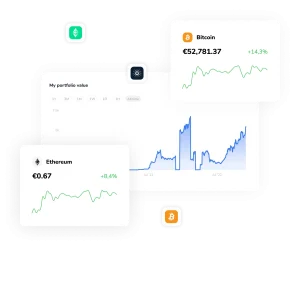
Successful trading in an increasingly turbulent stock market requires a lot of patience from the trader, as well as knowledge and discipline. Efficient managers of risk know when to maximise their returns between trades and minimise their losses on a daily basis.
Spreading investments over various asset classes, hedging investments and using stop-loss orders on positions can all help investors with the risk of substantial volatility in their investments. Additionally, it would be a good idea for investors to periodically review their risk tolerance and longer term financial goals.
Diversification
The more diversified you are across asset classes, geographic locations, security durations and durations, the less risk you’re taking in your investment. And remember to measure the risk-adjusted returns of your investments by dividing their return by the amount of risk there is involved.
Good investing requires you to think long-term. Don’t let short-term market volatility derail the progress you’re making toward your financial goals; rather, keep assets in place and rebalance when markets go awry, not when markets are acting unusually.
What triggers moves in the stock market is anything that can influence the macro and micro environments, including earnings reports, political events and government policy, economic data and investor sentiment; all these affect the shares of individual companies that, in aggregate, move the economy as a whole. For instance, when a company makes product recall or data breach announcements, their share prices will plummet immediately.
Hedging
Stock market volatility need not be a deterrent to long-term investors. On the contrary, if they are willing to wait out the volatility, they should take deeper breaths because that volatility allows them to buy stocks at prices that are down significantly from their recent peaks – which in turn can boost the ultimate returns of their portfolios. Finally, investors may still elect to use hedging strategies to minimise the impact of volatility. These should be weighed very carefully before adding any of them to your portfolio.
Hedge funds. Okay, let’s begin with my favourite example of an unfamiliar word that’s actually quite valuable, widely used and straightforward in meaning. Hedge is an adjective. If I have a mixture of potbellies and yams in the hen house, the ones that’ll keep on producing are called hens and the others hoggets. The adjective hedge roughly describes the domestic-animal counterpart. But hedging is a verb: I hedge my bets. So, if a bet is a risk, something that moves so much it’s hard to follow, a hedge fund is something that keeps the edgy riskiness out. A hedge is a kind of net that stops loss or prevents sudden downside. Hedging is sort of opposite to investing; it limits your upside by preventing losses, or stems a downside flow by schedules of putting money back when it’s lost. Putting on a hedge, a portfolio of securities that hopes to offset loss by making more in the same currencies somewhere else, is a skilled way of insuring against volatility in your investment outcome. This can be particularly useful in very volatile markets, where it averages out the effects of sudden sell-offs.
Economic factors and investor sentiment can likewise be a major factor, given dramatic effects on the financial results of individual companies and on investor behaviour. This is in turn a major factor in overall stock market volatility: steep rises in inflation or interest rates, for example, can hurt companies and cause unexpected turbulence on the stock market.
Stop-loss orders
Having a stop loss in place is a useful tool to help a trader or investor reduce their risk and leave it to order execution. However, in particular for high-volatility markets – if your stop loss order getting executed is somewhere in the price range of your price target, you might miss out on those gains. While stocks rebound – and it could prove very hurtful if you’re investing for the long haul.
A stop-loss order can also be a trailing stop or a limit order – the latter sometimes offering more precise targets than traditional orders, although the market can be more volatile during these periods. Yours might offer a trailing stop order – where target prices change as the stock price moves, which makes it more flexible than traditional limit orders. The option you choose should ultimately be geared towards your trading strategy.
Active management
The volatile markets require discipline and attention; investors need to avoid chasing short-term performance and react strongly to bumps and dips. They should keep their investments geared towards the long-term. By using a combination of diversification, hedging and paying attention to cyclicality effects on portfolios, the shock of volatility should be mitigated.
Volatility represents opportunities for active managers to provide shareholder returns quickly. An active manager who’s confident in a company’s ability to outperform its competitors can take advantage of a bear market to pick up stocks while they’re on sale. In bull markets, all stocks go up, but a bull run – when stock prices increase 20 per cent or more – might also afford active managers an opportunity to jump in and out of the market. By taking profits on stocks that have had exceptional runs, and reinvesting those proceeds in other companies that, through analysis and research, will continue to beat the market.








